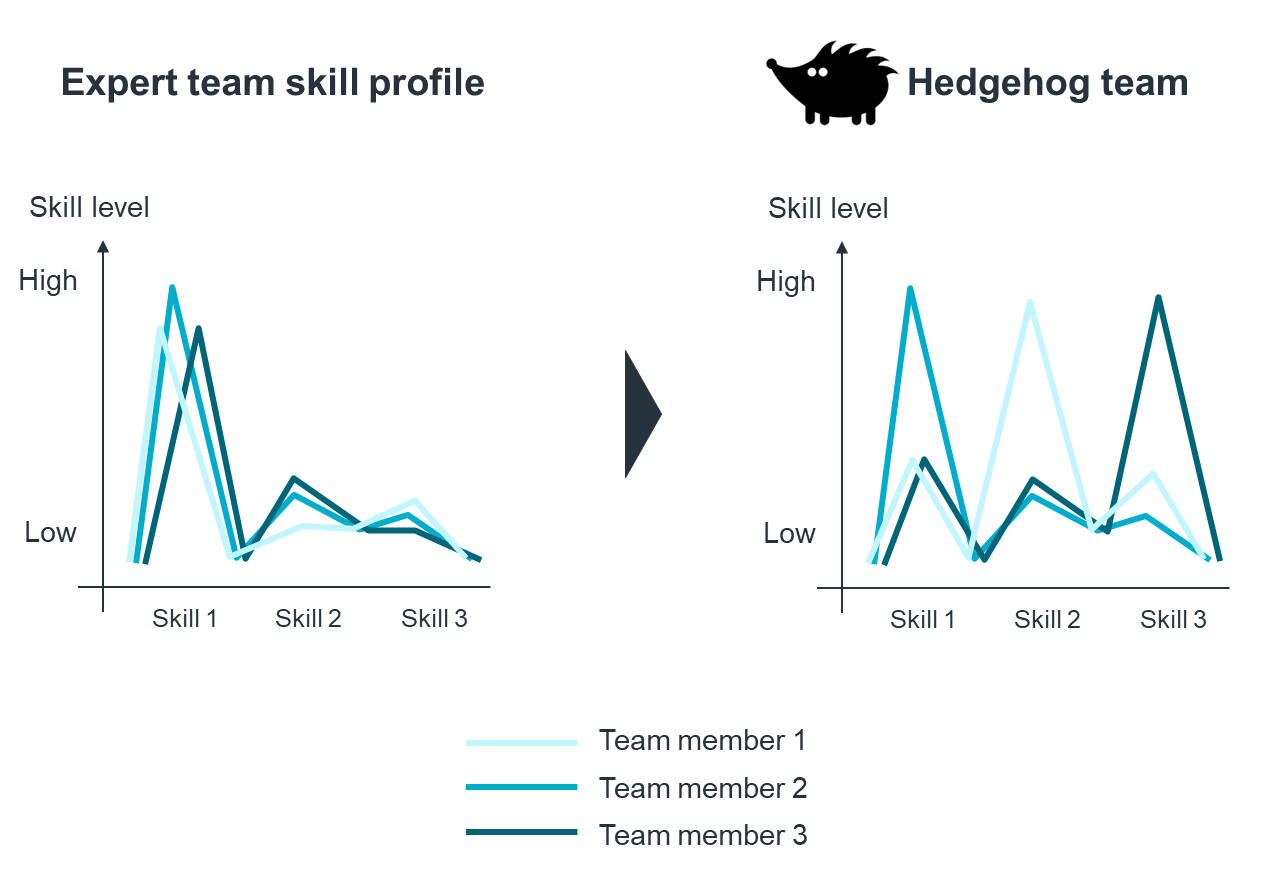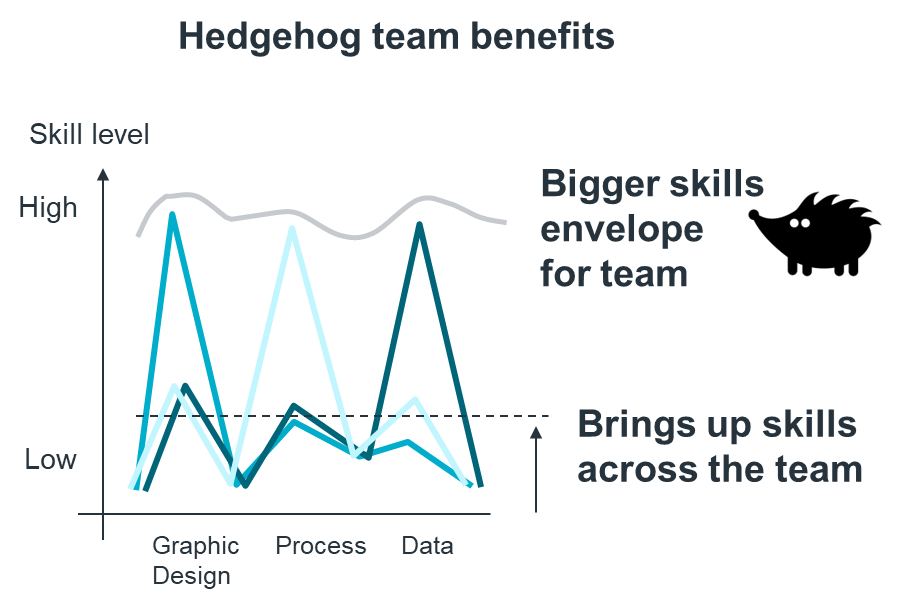A Rocky Start in Management
A few years ago, I got my start in management running a team that produced documents for our company’s sales teams. It didn’t start well. Three times that week I’d had a phone call from salespeople telling me that the team had screwed up. “We opened the document and the client immediately noticed the numbers didn’t add up!” Or “The chart looked great, but it was for the wrong product.” Our team included some very skilled designers, but there were too many mistakes. We needed to find a solution. Fast.
My first thought was to get everyone to check everyone else’s work. But after 5 minutes, anyone with half a brain would struggle to stay awake. So, I tried a different tack. We had a new student in the team. I asked her to sit with our most experienced designer and note down everything he did. After a week, we had a detailed production cycle. By following the detailed plan she’d made, the calls halved.
Building Skills Spikes
But over a few months, the team’s responsibilities grew, and the calls came back. Looking over the plan, we noticed that we sent emails to request data, called people to get the data, then hunted the inbox to find the email, before updating any documents. That couldn’t be efficient. So we re-organised all the data requests into one per data source. And then getting the data on our own didn’t seem so daunting. Rather than hiring another designer, we took the brave step of hiring a data expert into a design team. After some convincing to join the team, he helped us automate the updating process, so that each team member could produce many times more documents, and the calls stopped altogether. After that, the calls stopped, the team’s output continued to scale and everybody got promoted.
Discovering the Hedgehog
While this is a story about skills and improving team performance, it’s also a story about diversity. It’s obvious that the team in the story needed skills to function, but it’s less obvious that the optimal skill mix was not for each individual to be quite good at everything, or improve their individual skills, but for each team member to have one or two spikes – skills where they are truly excellent. While riding my bicycle at the weekend, it occurred to me that a graph of a team’s skills should have multiple spikes… something like a hedgehog? And so the idea of a hedgehog team was born.

Benefits of the Hedgehog Team
A hedgehog team’s spikes mean that the envelope of the team’s performance is bigger than one individual could achieve. Secondly, the hedgehog structure enables everyone to raise weaker skills up to a reasonable level, again improving performance.

Isn’t this just a Skills-Based Team with a Fancy Name?
When one of my colleagues asked me that, I needed to think hard because the approaches are similar. On reflection, I realised that there are important differences: a hedgehog team puts the emphasis on choosing the key skills for a team and then using this mix to bring everyone in the team up to a higher level, whereas a skills-based approach focuses mainly on allocating tasks to people’s strengths, and so does not fully explore the potential of the idea.
Managing a Hedgehog Team
This thinking certainly sharpened up my annual reviews and development discussions. My first step is now to say that we will put aside the company and team interests, and instead focus on the individual – what is right for them – because the long-term interest of the organisation is also best-served by a thriving group of people moving towards their goals. Then the discussion rapidly moves into a discussion of their skills spikes that they have today and the ones they would like to develop and how they might go about doing that, of course within the context of the spikes that the team needs. We then plan actions in the interest of the team member.
How to Hire a Hedgehog Team
To build a hedgehog team, think carefully about the skills a team needs to perform a role, and which skills to add as the team grows. Your job adverts will become – spikier – and you will begin to hire people who developed those spikes doing totally different things. You will probably conclude that sourcing hires from your two or three key competitors’ equivalent teams might not be the best idea. Instead, identify the skills you need, then try hiring some newly-minted PhDs with these skills, or experienced hires from other industries. And once you start hiring people from diverse sources with diverse experiences, the standard diversity metrics may begin to look after themselves.
Conclusion
Spiky hedgehog teams enable inside-out transformation. If you incorporate technology and data spikes into the team, the digital journey is much easier. Hedgehog thinking also enables a re-think of team development. In short, hedgehog teams can unlock performance and enable transformation.
What are your spikes? What spikes are you working to develop?
By Andrew Salmon, Director of Alpha FMC







